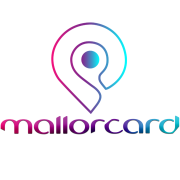Fiestas
Mallorca is
famous for its vibrant local fiestas, deeply rooted in traditions and
celebrated across the island throughout the year. These festivals showcase the
island’s history, culture, and religious customs, often featuring lively
parades, traditional dances, and elaborate re-enactments.
January
and February: Sant Antoni and Sant Sebastià
The year
kicks off with Sant Antoni and Sant Sebastià festivals in
January. Sant Antoni, patron saint of animals, is celebrated with bonfires,
parades, and the traditional dance of demons (dimonis). The town of Sa
Pobla is especially known for its grand Sant Antoni celebrations. Following
closely is Sant Sebastià, Palma’s patron saint, honored with concerts,
bonfires, and fireworks across the capital.
In
February, the Fira de la Flor d’Ametler (Almond Blossom Fair) in Son
Servera marks the blossoming almond trees, turning the landscape into a sea of
pink and white. This fair is a showcase of local produce and crafts, with
almonds taking center stage.
Spring:
Easter, Es Firó, and Medieval Markets
Easter is a
major event in Mallorca, known as Semana Santa. Towns like Palma host
elaborate processions, while many inland villages hold their own religious
events. The festival brings together tradition, spirituality, and community.
One of the
most famous spring festivals is Es Firó in Sóller, held in May. It
re-enacts the historical battle between the local townspeople and Moorish
pirates, complete with mock battles and colorful costumes. Meanwhile, the Capdepera
Medieval Fair turns the historic town into a medieval wonderland with
artisan markets, street performances, and period costumes.
June:
Sant Joan and Sant Pere
June brings
the Nit de Sant Joan (Saint John’s Night), one of the island’s most
magical celebrations, welcoming the summer with bonfires and beach parties.
Palma and other coastal towns hold vibrant events where locals and visitors
alike gather to celebrate this ancient tradition of renewal and purification by
fire.
In late
June, the Festes de Sant Pere (Festival of Saint Peter) pays homage to
fishermen. This festival, celebrated in coastal towns like Port d’Alcudia and
Port de Sóller, features processions of fishing boats, fireworks, and plenty of
seafood.
Summer:
Music, Moors, and Christians
As summer
unfolds, the festival calendar intensifies. La Patrona de Pollença in
August is a highlight, where locals stage another re-enactment of the Moors and
Christians battle, filling the streets with lively parades, music, and dancing.
Meanwhile, the Festes de Sant Jaume in Alcúdia and Manacor celebrate
Saint James with fireworks, concerts, and street parties.
July and
August are also peak times for music festivals, such as the Deià
International Music Festival, which attracts classical music lovers from
around the world. For those who prefer something more active, the Des Güell
a Lluc a Peu is a nighttime pilgrimage from Palma to the Lluc Monastery,
covering over 50 kilometers of scenic countryside.
Autumn:
Harvest Celebrations
As the
summer fades, the island embraces harvest festivals. Festa des Vermar in
Binissalem is dedicated to the grape harvest, featuring wine-tasting events,
grape stomping, and even a grape battle. The Firo del Meló (Melon Fair)
in Vilafranca de Bonany is another quirky festival, celebrating melons with
competitions for the largest melon and inventive melon-based dishes.
These are
just a few highlights from Mallorca’s packed fiesta calendar. Each village and
town celebrates its own patron saints and agricultural fairs, ensuring that
there’s always a celebration somewhere on the island. These events offer
visitors a unique opportunity to experience Mallorcan culture, often blending
history, religion, and community spirit with music, food, and fun. Whether it’s
fireworks lighting up the night or the sounds of traditional Mallorcan music,
the island’s fiestas are an essential part of its identity and charm.

